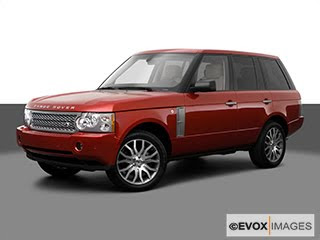 Performance
PerformanceAccording to most reviewers, the Range Rover combines sedan-like performance on-road with billy-goat capability off-road. The result is an SUV that's immensely enjoyable to drive.
Acceleration and Power
The Land Rover Range Rover comes in two trim levels. The base HSE model has a 4.4-liter V8 making 305 horsepower at 5,750 rpm. It also produces 325 pound-feet of torque and is mated to a six-speed automatic transmission. More power is available in the Range Rover Supercharged model, which has a 4.2-liter Supercharged V8 making 400 horsepower at 5,750 rpm and 420 pound-feet of torque. The Supercharged engine is also mated to a six-speed automatic transmission. Acceleration on either the HSE or Supercharged Range Rover is powerful. Both the Range Rover HSE and the Range Rover Supercharged get an Environmental Protection Agency-estimated 12 miles per gallon in the city and 18 miles per gallon on the highway for the base engine, and about the same for the Supercharged V8 -- lower than most vehicles in the class. Both models require premium gasoline.
Handling and Braking
Handling on the 2009 Range Rover is nimble for a vehicle of this size and considerable weight. Given the Ranger Rover's extreme size and weight, its confident braking performance is a pleasant surprise.
Reviewers widely agree that the suspension on the 2009 Range Rover is a technological marvel. From inside the passenger cabin and while in motion, the suspension can be raised or lowered, depending on driving conditions. At its tallest the Rover can safely cross up to 27.6 inches of water, yet when it hits 70 miles per hour, the suspension lowers the vehicle for better road grip and control.
Off-Roading
Though the consensus is that the suspension is quite competent and luxurious on-road, it is off-road where the Range Rover really shines. Though it's an independent air suspension, off-road it behaves like a live-axle setup. When the suspension senses harsh off-road conditions, crosslink valves open to let one wheel affect the other. The result is that when one wheel is pushed up by an obstacle, the opposite wheel is pushed down to deliver more power to the ground and clear whatever is in the Rover's path.
The suspension is combined with the transmission, four-wheel drive and traction control system for what most test drivers observe as one of the most capable off-road vehicles on the market. Off-road, drivers can control the Range Rover with the Terrain Response System. From a switch in the passenger compartment, the driver selects from five types of road conditions, including normal driving, slippery conditions, mud, sand and rock-crawling. The system then automatically adjusts the throttle, brakes, traction control and suspension according to the conditions. For steep trail sections, the 2008 Range Rover comes equipped with Hill Descent Control (HDC). When activated, this system allows the SUV to safely and stably attack steep and rough slopes by automatically controlling the braking, transmission and throttle.
The transmission again shows its strength in off-road exercises, thanks to the lowest gearing in its class. It also has an extremely slow low-range crawl, and can poke along at 2.4 mph at 1,000 rpm, giving drivers the power and control they need for demanding off-roading.
No comments:
Post a Comment